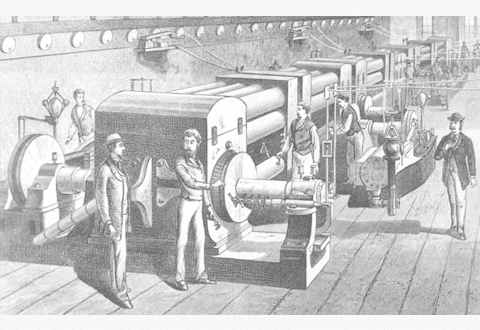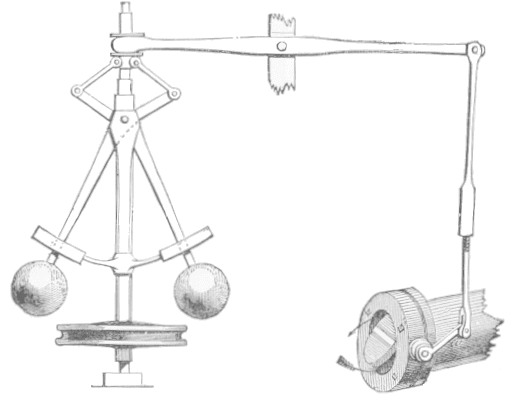What Happens When You Flip the Light Switch: From Zero Seconds to 20 Years
Table of Contents
Introduction
Few people know what happens when a customer does something like flipping a light switch. The full explanation requires descriptions of topics that span nanosecond to decade-long time scales. Think of it as scales measured with a high-speed chronograph, a stopwatch, an hourglass, or a calendar.
At the earliest and briefest instants, pure physics governs. At longer periods, engineered control systems come into play. Beyond that, we have the commitment, existence, and planning of resources which are economic, demographic, and political issues. The grid demands an integrated and seamless approach to all aspects and all time scales thus some cross-discipline generalists. A few generalists work in all-time scales. I was fortunate to be one of them, so it is my privilege to take you for a walk through the sequence of events.

Kudos to Thomas Edison who invented not just the light bulb, but the whole electric utility industry. Edison’s original vision incorporated the entire physics-engineering-economics continuum discussed in this article. His execution of the plan became The Edison Electric Illuminating Company. Today, it is called Consolidated Edison of New York.
Suppose a customer throws a switch to turn on an electric load (anything from a light bulb to a steel factory), the sequence below shows how the grid responds. Keep in mind the following.
- Each entry in the list below describes a range of time following the switch action; the earliest and most short-lived first. The list includes two dotted lines. The first dotted line marks the boundary between reactive response to unplanned events (such as your light switch), and proactive actions anticipating the future. The second dotted line marks the boundary between automated actions (supervised by humans) and manual actions.
- The word dispatch refers to a particular allocation of power to all generators on the grid to satisfy all the loads. Some dispatches are more desirable than others in terms of risk and economics. A valid dispatch will not overload any part of the grid or otherwise violate security constraints. A valid dispatch also conforms to physics. It satisfies all loads and accounts for power losses.
- Energy is conserved at all instants of time and all ranges of time, respecting Ohm’s law V=IZ and P=VI on an instantaneous basis. To simplify the discussion, I won’t talk about reactive power.
- The size of the power grid is nearly continental. It has billions of components. Its configuration changes second by second, and the instrumentation monitoring can not measure every point. A state estimator is part of the software. It provides estimates of the actual operating state that is consistent with observations and physics.
- The phrase contingencies means the following. Given the state and a proposed dispatch, consider the unexpected outage of every major line, or generator in the entire grid. It includes every possible outage one at a time. In certain critical areas, we include all combinations of outages taken two at a time or three at a time. For each combination, we calculate the power flows in the entire grid and compare them to the allowable maximums. We reject dispatches that would result in overloads following any combination of contingencies. We may evaluate more than 100,000 such contingencies each candidate dispatchs.
- Practices and nomenclature vary from place to place. The following reflects my experience.
Here is what happens, starting at time zero when the customer throws the switch (without asking permission or scheduling the event in advance).
Zero – 0.01 seconds
A transient surge races through the grid at about 0.8 light speed. Stored electric and magnetic fields in the grid supply the energy to your light. Every nearby and remote generator on the grid, every node voltage, and every current in a wire of the entire grid will be altered slightly. This is pure physics. We could observe it using a chronograph.
0.01-1 seconds
When the surge reaches generators, they begin to slow down. Generators closer to your light switch decelerate earlier and more. Inertia stored in the rotating shafts supplies the energy to your light. Grid frequency decreases on a downward slope, and the phase angles of the voltage at all nodes change. To some extent, the magnitudes of other loads on the grid will change with frequency, but that is a second-order effect. This is pure physics.
1-15 seconds
Synchronous generators are “phase-locked.” Except for brief transients, they all see the same frequency everywhere in the grid. This too is physics on the stopwatch scale.
Now, engineered controls begin to act. The speed governors at the power plants begin to adjust mechanical power to the prime movers in response to frequency changes. Typically, each 1% change in frequency causes a 20% change in power. This applies to every generator on the grid, but some can respond more rapidly than others. By the end of this period, grid frequency will be almost returned to normal, and changes in the prime mover powers will supply energy to your light.
This fully distributed, robust, and hacker-resistant, local-sense-and-correct scheme for frequency control has been in use for the past 130 years. This is the first and foremost level of grid control.
15 seconds -15 minutes
The central automatic generation control (AGC) system senses the changes and sends new setpoints to the local control systems of all power plants. The purpose is to a) Return grid frequency to exactly nominal. b) Return all power transfers between regulated regions to their agreed-upon values.
Reactive ▲
Proactive ▼
c) Find the optimum dispatch for the coming period. That includes the past fact that your light switch is on, and future forecasts of what is expected in the next period. AGC may also consider contingencies and constrain the results to avoid potential violation of security constraints.
15-30 minutes
Calculate a new optimum dispatch to supply the total grid load for the coming period, based on the state plus forecasts. This is called Economic Dispatch (ED). ED may include decisions to start or stop short-notice resources such as gas turbines. Every candidate dispatch is validated against the list of contingencies. ED considers more contingencies than AGC. AGC and ED are typically done in regional-level control centers.
Solar and wind generators are not as controllable as conventional power plants. The wind gusts and clouds pass overhead. It is best to think of these variations as incremental changes in load, in both the plus and minus directions. Other unplanned events, such as a tree knocking a line down, or a power plant tripping offline, are handled in ways analogous to handling your light switch event.
1 hour: The Real-Time-Market (RT)
This is an economic auction to determine who will supply services and capacity, and at what prices, to make up for the incremental difference between the current forecast for the next hour’s needs and yesterday’s forecast for the same hour, Occasionally, a major unplanned event will make the next hour’s reality very different from yesterday’s forecast. Possible starting and stopping of resources or curtailment of human plans are part of the decision, as are contingencies.
1 day: The Day-Ahead-Market (DAM)
The DAM is an economic auction to determine who will supply energy and services to satisfy the forecasted needs for each hour of the following day. Optimization finds the least cost way to serve the needs while observing the constraints. Every candidate dispatch is validated against the list of contingencies. Some plants will be called to run, some to shut down, and some to run at partial capacity. Ditto for requests to import-export power to other regions.
The results of the auctions are posted as tomorrow’s hour-by-hour operating plan and available to all participants so that they can make their plans. For example, your employees can take the day off if your plant will not be called on to run.
We use essentially the same kinds of calculations for DAM, RT, ED, and AGC optimizations. The difference is that the further we look into the future, the more options are available to choose from. The closer we are to real-time, the more locked in we are to the current state.
The RT and DAM auctions set a wholesale price for energy for each electric location on the grid for each instant of time (with a bit of granularity). Buyers are matched with sellers to determine quantity and price in a manner analogous to buy/sell clearing prices of the stock on a stock market. Services other than energy are also auctioned. Wholesale energy prices can be very volatile, ranging from -30 to +100 ¢/kWh, and averaging perhaps 3 ¢/kWh. Most retail customers are completely shielded from the volatility. They expect the light to come on when they throw the switch, and they get a bill at the end of the month. They can ignore everything else. Retail invoices include the charge for delivering the energy to the customer’s doorstep.
1-4 days:
Load Forecast based on demographics, history, the calendar, and weather, calculate the anticipated loads for each bus in the grid for each hour. For example, if tomorrow is a holiday or it will be hot, the forecasted loads will be different. Special forecasts are generated for DAM, RT, ED, and AGC. Many modern load forecasters use neural networks and artificial intelligence learning methods.
1 week: Outage Scheduling
Power plants, transmission lines, and all parts of the grid need maintenance that requires equipment to be taken out of service temporarily. Outage schedulers make sure that not too many planned outages pile up on the same day in the same area.
1-3 months: Installed Capacity Markets
According to economic theory, the RT and DAM markets are competitive only when there is a surplus of bidders, and some of the bidders go home with their offerings unsold. If generation bidders held back, prices would soar. That is what happened in California in 2000 with Enron among the infamous bad guys. To prevent that, utilities must purchase guarantees that installed capacity resources ready and able to provide adequate bids to the auctions. Both long-term contracts and shorter-term capacity auctions are used.
About half the time utilities enter into long-term power purchase contracts with generation owners, thus bypassing the DAM and RT, but they still need the markets for the other half.
In some areas, utilities still own the power plants. In that case, the capacity issues are internal and not transparent.
Automated ▲
Manual ▼
1 year: Fixed for Float Swaps
Some parties (think of a city government for example) need predictable budgets and can’t stand price uncertainty. They can make contact with other people who are willing to take on risk in exchange for a fixed fee. Financiers call these fixed-for-float swaps. For wholesale grid energy, they are typically negotiated by lawyers at least one year in advance.
1-10 years: Transmission Planning
Based on anticipated regional demographics, and anticipated new generating facilities, transmission planners figure out how many lines of what capacities are needed and where they should be. They mostly do that by simulating lots of possible contingencies to come up with a plan robust enough to meet requirements. The simulations are speculative, but their differential equations are physics-based. Since it can take up to 10 years to build a new power line, planning is done with very long planning horizons.
1-20 years: Generation Planning
Based on anticipated regional demographics, anticipated fuel costs anticipated technologies, and anticipated laws, regional planners figure out the mix of generation types and locations needed for a 20-year planning horizon. In today’s deregulated world where any investor can decide to install solar, wind, or gas turbines anywhere without asking permission from any planners or consulting a generation plan. Imagine the impact of a carbon tax on plans, or worse the uncertain possibility of such a tax. Issues and uncertainties like that made generation planning less useful than in the past, to the point of being mostly moot.
On the other hand, old-fashioned power plants were designed for 45-year lifetimes, but some modern facilities can be designed, installed, and paid off in just a few years, thus making generation planning less needed.
Conclusion
We looked at the immediate and long-term causes & effects of turning on a light. Next time you’re on an airliner at night, watching the lights of the cities glide past below, think what a miracle that is.
The next likely step in the future will be to integrate the operations and markets of the electric grid and the natural gas industry.
Acknowledgment
PF Science Advisor Jim Hardy contributed valuable suggestions to this article.
Dick Mills is a retired analytical power engineer. Power plant training simulators, power system analysis software, fault-tree analysis, nuclear fuel management, process optimization, power grid operations, and the integration of energy markets into operation software, were his fields. All those things were analytical. None of them were hands-on.
Dick has also been an exterminator, a fire fighter, an airplane and glider pilot, a carney, and an active toastmaster.
During the years 2005-2017. Dick lived and cruised full-time aboard the sailing vessel Tarwathie (see my avatar picture). That was very hands on. During that time, Dick became a student of Leonard Susskind and a physics buff. Dick’s blog (no longer active) is at dickandlibby.blogspot.com, there are more than 2700 articles on that blog relating the the cruising life.







“Even so-called power system stabilizer devices (which my firm pioneered) use only local information.”
You understand those things?
We put one in around 1974-ish.
I do not know that formula in Anorlunda’s post 45
What i do understand is that a line’s impedance determines how much power goes down it per degree of displacement between its ends.
So it’s a mechanical spring constant for electrical angular displacement between its ends
and there’s a rotating inertia at each end of the line
so that rotating spring-mass system has a torsional natural frequency.
So it is possible for torsional harmonic motion to occur between nodes, ie they can swing against each other..
Our power system stabilizers detect minute swings in turbine shaft speed at torsional natural frequency* and change excitation to damp them out .
Prior to the stabilizers we severely overdamped our voltage regulators to keep swings from starting. But that was trial and error and worked some days and not others…. i had watched generator shafts swing by shining a Strobotac on them , it was obvious from power angle swings that the voltage regulator was somehow involved but i had not the power systems background to understand .. Placing a voltage regulator to manual stopped the oscillations.
We are speaking of torsional frequencies in the range of 2/3 hz. SCADA systems of 1970’s didn’t sample often enough to control that from central office.
That’s what little i know about system stability. I hope this layman’s description helps with the concept.
* that’s power system’s natural frequency of around a hz, [U]not [/U]turbine shaft’s natural frequency of closer to 7 hz which is another whole story.
old jim
“What is the ‘good thing’ about coal systems? Isn’t it more about steam turbines than the actual heat source?”
Coal fired steam plants are being replaced by gas turbines. Different inertia. .
Natural gas is wonderful fuel for steam boilers, doesn’t slag them up and there’s no flyash to handle.
In my day our fossil units burned oil, natural gas on rare days we could get it, or any mix of the two.
When environmental regulations became unpredictable management contracted to buy power from already permitted coal plants , “Coal by wire”, avoiding cost of running trains down the state . Since then there’s new pipelines bringing lots more gas.
So you are correct – my objection is not to replacing coal , but to replacing steam with ‘high tech’ at expense of reliability.
old jim
“And that’s why i think the “Kill Coal” movement is ill advised dilettante tinkering. It adversely affects system inertia.
“Forgive them, Father, they know not what they do. “”
You’ll like this photo I just snapped of an ad on the back of a publication from my rural electric utility.
[ATTACH=full]93104[/ATTACH]
“But doesn’t the real stability problem arise when the major generating centres are well separated? Doesn’t the transmission line length start to affect things? (Unless DC links are used)”
I believe what you’re thinking about Sophie is the basic transient stability formula. ##P=frac{V_1 V_2}{X}sin(theta)##, where X is proportional to line length. But that applies to any two adjacent nodes. It doesn’t matter if they are generators or loads or whatever. In actual practice, we keep ##theta## very much smaller than 90 degrees, so that kind of stability is seldom a problem.
“Brazil is similar. Brazil’s hydro resources, developed long ago, are 1000 km or more distant from the population centers.”
But doesn’t the real stability problem arise when the major generating centres are well separated? Doesn’t the transmission line length start to affect things? (Unless DC links are used)
“A long skinny state like Florida that is fed only from the north requires a steady hand to keep power flow within capability of the lines.” That’s true Jim. Just 3 weeks ago, I just traversed Florida east coast to west coast crossing Lake Okeechobee on my boat. I was shocked that I only passed under only two major power line corridors on the entire route. Nevertheless, Florida’s skinny network pales in comparison to countries like Sweden and Brazil.
In Sweden, much of the generation is way up in Lapland, while the population is 1500 miles away in the south of the country. That was especially true in the decades before they started building nukes in the south. They managed to keep it all flowing for half a century before any modern or centralized controls.
Brazil is similar. Brazil’s hydro resources, developed long ago, are 1000 km or more distant from the population centers.
“None of our centralized control systems are used to maintain stability.”
So they just optimise the profit then? Not a bad thing.
“And that’s why i think the “Kill Coal” movement is ill advised dilettante tinkering. It adversely affects system inertia.”
What is the ‘good thing’ about coal systems? Isn’t it more about steam turbines than the actual heat source? I would have thought that an alternative fuel would not change things but I realise that you couldn’t shift enough wood to do the job!
“Are you really sure you could do this and keep the system stable with no communications involved?”
Positive. None of our centralized control systems are used to maintain stability. Not now, not historically. Even so-called power system stabilizer devices (which my firm pioneered) use only local information.
We mustn’t neglect the fact that power grids evolved from 1888 until the 1960-1970s without the aid of electronics or computers. The analytical basis of power system analysis and system stability was put on a firm footing by [URL=’https://en.wikipedia.org/wiki/Charles_Proteus_Steinmetz#AC_steady_state_circuit_theory’]Charles Proteus Steinmetz[/URL] in 1893. The advent of modern controls and computers have allowed us to increase reliability and improve the economics, but they have not displaced the underlying operating principles of AC networks invented by Tesla (before Tesla drifted off into la-la land) and described by Steinmetz, [URL=’https://en.wikipedia.org/wiki/Charles_Concordia’]Charles Concordia[/URL] and others.
If you want an oversight of what the centralized control systems actually do, reread the Insights Article. [URL=’http:// What Happens When You Flip the Light Switch?’] What Happens When You Flip the Light Switch?[/URL]
A long skinny state like Florida that is fed only from the north requires a steady hand to keep power flow within capability of the lines.
Especially when you get a lot of generating eggs in one basket.
We had some spectacular blackouts in early 70’s when two big nukes came on line south of Miami. When they tripped we simply could not move enough power below Palm Beach to make up the shortfall.
A power system is like a bicycle — there’s a learning curve.
Now they have stout power lines from coal plants in south Georgia-Alabama region all the way to Miami . They parallel US 27 for miles and miles, you’ll notice them if you take that route to Disneyworld or Miami. . The system is far more stable since they were built.
I’m now retired to the Ozarks. Several coal trains per day pass through my town headed to those plants.
And that’s why i think the “Kill Coal” movement is ill advised dilettante tinkering. It adversely affects system inertia.
“Forgive them, Father, they know not what they do. ”
old jim
“I want to make laymen able to understand how we can operate a continent size power grid without any computers or centralized controls.”
Are you really sure you could do this and keep the system stable with no communications involved?
“I just scanned that fascinating White Paper on aafrequency response.”
Yeah, there is a lot more diversity in frequency regulation than I admitted to in the Insights article. I heard once from a guy in NZ at a hydro plant. They used 1% or 2% droop deliberately so that the nimble fast-responding hydro unit would grab more than its fair share of frequency regulation.
5% governor droop used to be nearly universal. Today it is much less so. I blame the combination of free markets and NERC standards. In the market I know best, frequency regulation was an auxiliary service that we bought by auction and paid hard money for. Once we met the NERC minimum performance standards, what rationale can we give for spending somebody’s money to purchase more? Hard money in exchange for soft benefits that are not required sounds like mismanagement to auditors, so we don’t do it.
Actually, frequency regulation has been much on my mind for the past year. I view it as our best fallback defense against claims that cyber attacks can black out the country. Think of the wildly irresponsible current book by Ted Koppel for example. The public is all too willing to believe scary stories like Y2K and cyber-grid-Armageddon. I recall that from 1888-1970 something, we operated the grid just fine using mostly flyball governors. Call it the Battlestar Galactica defense if you will. If we eliminated all computers and all electronics, could we (mostly) keep the lights on? I view it as a public relations problem rather than a technical problem. I believe that even if we reverted all the way to the Battlestar Galactica positoin, that the public would believe scary stories from Koppel and others anyhow. The sad fact is that the details of what keeps the lights on is dreadfully boring unless you are depicting disasters. If you try to explain how and why the grid is safe, people get bored and flip channels or flip pages almost instantaneously.
I’d like to have a discussion thread on PF about cybersecurity and the grid. I’m thinking “General Discussion” instead of “Electrical Engineering” because IMO it is a social topic. But I’m working on a couple more Insights articles on AC analysis that I’d like to finish first. I want to make laymen able to understand how we can operate a continent size power grid without any computers or centralized controls.
Perhap you would start another thread as requested so we can knock this nonsense on the head.
“ddesaneis, sophiecentaur,
What in the world are you two debating and what does it have to do with the Insights article? Perhaps you could move it to a conversation.”
Doesn’t it relate to what happens when you flip a switch? It’s just at an earlier stage in the process.
But I now realise the Insights article is essentially Engineering and not what we were kicking around. Dunno how I got into this thread, aamof. I didn’t spot the Orange Flag.
Sorry chaps.
ddesaneis, sophiecentaur,
What in the world are you two debating and what does it have to do with the Insights article? Perhaps you could move it to a conversation.
“Some evidence exists, because galvanic cells are amazing.”
I doubt that is true. c is 1ft per ns and the rise time of a chemical reaction of that sort is not like Nitroglycerine so how would you ever detect it over a galvanic cell of Lab proportions?
When you get down to it, there is either a rational explanation, based on a propagation speed that’s somewhat below c or it’s instant Magic. Which one should a PF member go for?
“Why do you use the word “simultaneously”? Just as with any arrangement of charges, the status takes time to establish itself. Not battery suddenly appears out of empty space but it will be assembled and charges will migrate to establish an equilibrium. The same point was discussed recently about the depletion layer in a solid state diode, which also does not suddenly appear.
Once a circuit is connected across the galvanic cell, there will be another redistribution of charges. In this case, however, the charges will continue to flow until the chemicals, providing the potential energy, are exhausted.
The fastest that any EM phenomenon can be established involves c. There is no need for Instantaneity to be involved.”
“Of course. And it would take many milliseconds for the connected circuit to settle down. c would still limit the time taken. You have no evidence of anything happening instantly; you are just surmising.”
Some evidence exists, because galvanic cells are amazing. Their reactants must detect the integrity of path within both the (continent-long) conductor and the electrolyte, BEFORE they could convert chemical reaction energy into magnetic or electrostatic energy.
After the galvanic reaction, the entire amount of magnetic energy must remain within the superconductor (w/o the electron from the galvanic reaction). If the galvanic electron remained in the circuit, a hot spot would result from the concentration of magnetic energy within the electron, and magnetic energy would only be available at the location of the galvanic electron.
Note: 0.356 eV (typical galvanic reaction energy) applied to a single conductor molecule would produce high current through high resistance (rapid conversion to thermal energy) E = 1/2 LI^2.
Note: There is no settle-down of volts, because there are zero volts within the superconductive material and no exchanges between magnetic and electrostatic energy.
“In theory, the distance between the switch and the galvanic cell could be continental (given superconductive lines to the switch).”
Of course. And it would take many milliseconds for the connected circuit to settle down. c would still limit the time taken. You have no evidence of anything happening instantly; you are just surmising.
“After several minutes of googling, it appears to have been a temporary exhibit at the Smithsonian, back around 2002.
”
Oh bummer, it looks like a fun exhibit.
”
You’ll have to join the Navy, if you want to see one in real life.
You can ask [USER=12967]@B. Elliott[/USER] about what that’s like.
He is the last idiot I know of, who [URL=’https://www.physicsforums.com/threads/well-i-joined-the-navy.240869/’]joined up[/URL].”
Haha, they don’t let “mature” engineers like me into the Navy. haha
I know two guys who were Nuclear Power offices on submarines in the Navy after undergrad. They both ended up getting PhDs (one of them I still know personally) and they both are extremely successful guys.
“What museum is that photo from? I’d very much like to go there.”
After several minutes of googling, it appears to have been a temporary exhibit at the Smithsonian, back around 2002.
You’ll have to join the Navy, if you want to see one in real life.
You can ask [USER=12967]@B. Elliott[/USER] about what that’s like.
He is the last idiot I know of, who [URL=’https://www.physicsforums.com/threads/well-i-joined-the-navy.240869/’]joined up[/URL].
OmCheeto was clearly deeply immersed in his job.
”
ppps. If you look closely at the image, there is a chrome bar running the width of the middle panel, about waist height. I’ve just realized that It is the equivalent of [URL=’http://www.urbandictionary.com/define.php?term=oh+****+handle’]the handles[/URL] they put in the passenger sections of automobiles. :oldsurprised: Never thought about that before.
”
What museum is that photo from? I’d very much like to go there.
0.01 through 10 seconds gave me a flashback to when they put young Om in charge of everything the day the external grid went down that was supplying power to his nuclear submarine, while the reactor was shut down, and the diesel was down for maintenance.
Thanks for the memories!
Lots of flashing lights and sirens.
[IMG]http://www.europa.com/%7Egarry/top.secret.nuclear.submarine.stuff.jpg[/IMG]
ps. The reactor did not melt down. Pats self on back. :smile:
pps. I would expand more on the story, but then I’d have to kill everyone.
ppps. If you look closely at the image, there is a chrome bar running the width of the middle panel, about waist height. I’ve just realized that It is the equivalent of [URL=’http://www.urbandictionary.com/define.php?term=oh+****+handle’]the handles[/URL] they put in the passenger sections of automobiles. :oldsurprised: Never thought about that before.
[edit]Ha! The profanity filter even works on links. I did not know that. Off to the TIL thread. :smile:
“must SIMULTANEOUSLY detect the integrity”
Why do you use the word “simultaneously”? Just as with any arrangement of charges, the status takes time to establish itself. Not battery suddenly appears out of empty space but it will be assembled and charges will migrate to establish an equilibrium. The same point was discussed recently about the depletion layer in a solid state diode, which also does not suddenly appear.
Once a circuit is connected across the galvanic cell, there will be another redistribution of charges. In this case, however, the charges will continue to flow until the chemicals, providing the potential energy, are exhausted.
The fastest that any EM phenomenon can be established involves c. There is no need for Instantaneity to be involved.
“I’d prefer that if you want to continue that discussion, you take it to a private conversation. Or if you prefer, I can break it off as a separate thread. We need to keep this thread on-topic about the Insights article. Thanks.”
No. It’s no more than a hill of beans, as someone once said.
The tungsten bit was fascinating though.
I’d prefer that if you want to continue that discussion, you take it to a private conversation. Or if you prefer, I can break it off as a separate thread. We need to keep this thread on-topic about the Insights article. Thanks.
That was quite a tirade – out of nowhere.
I think it may be more accurate (and relevant) to say, of Edison, that his laboratory team came up with the idea of using Tungsten for the filaments of bulbs. This was, I believe, after an extended programme of tests, using pretty well every substance know to man. It was, as he said (???) a matter of 99% Perspiration and 1% Inspiration. You may shed some light and tell me that is also a fiction.
“You seem to be a little bit emotionally involved with this issue (from the wording of your post). PF tries to be a bit more dispassionate.
When someone reports on a historical event they may well write differently to someone else yet neither of them is necessarily “lying'”. In any complex sequence of events (Science is a great example) there is often no truth involved. It’s just interpretation. Do you have any hard evidence to support your introduction of the term “lying” in this context? Bearing in mind that this discussion is not PF style at all.”
[USER=199289]@sophiecentaur[/USER],
Let’s discuss that PF-style, and the history of science. (Is there a flashy song akin to Gungam style for us to play?) o0)
I posted the link to inform your readers to correct an assertion that Edison created the light-bulb, a well known myth. It would like being on a bulletin board dedicated to cars and saying that Henry Ford invented to the automobile, a rather indefensible act, or in a more obscure example, saying that RCA invented the television (though they may have beat the snot out of Philo Farnsworth to win the economic benefits). I guess a question I would pose to you, a thinker of the first-order, is why you would accept such an inaccurate assertion just because “winners get to write history”? It seems a little contradictory on your part to insist on a high-caliber of discussion and then defend well known inaccuracies, especially in a domain where reputation is important such as science. Now, while you seem to attribute to my motivations and use of figurative language aspirations which aren’t present, let me rephrase my original post in a slightly less ambiguous manner:
“For you, dear reader, man, woman, or child of intellect, dissever yourself not from the fact *wags fingers about* that Thomas Alva edison was not the first human being to have a glass ampule full of an inert gas and a filament to be used to create light in a modular and wonderfully complex innovation of technology to provide light to human-kind. And, lo, though the author has done a wonderful job of filling in some of the details of power distribution from a technical standpoint and considering physical ramifications, I bid you be more discriminating on what you accept as historical fact, for we live in a world where people in the first-world, the same consumers of these ripples through time-space understood by said physical and technological laws use said lighting to perpetuate pseudoscience and revisionist history and deny all manner of things mainstream physics such as the impact that burning fossil fuels and altering the global climate. And that there, dear reader, is a most remarked curiosity of note, that perhaps the most important thing that happens when you flip a light switch is that fifty years hence, the world is forced to deal with the rising sea levels and other manner of effects you might not think of.”
Of course, a quick posting to a link showing the OP’s inaccuracy seemed just easier.
So, no, dear moderator of discerning taste, no disrespect was meant, and I lose no sleep over ignorance of history. :wink: And, yes, history, is complicated, and often to the victor go the spoils. But there’s confusion. Thomas Edison simply didn’t invent the lightbulb. If you want the highest quality in posts, shouldn’t it start with fact checking when building a narrative, especially when it has to do with the history of physics on a bulletin board aptly named PF? (And I accused no one of telling a lie.)
I know this forum isn’t truly a public sphere so many not have the same moral imperatives, and as moderator, you are charged with keeping order, but I would think anyone who has a love of science would prefer the more accurate to misleading perpetuation of a known myth.
“Do you think that not lying and then avoiding correcting a lie is any less immoral. o0)”
You seem to be a little bit emotionally involved with this issue (from the wording of your post). PF tries to be a bit more dispassionate.
When someone reports on a historical event they may well write differently to someone else yet neither of them is necessarily “lying'”. In any complex sequence of events (Science is a great example) there is often no truth involved. It’s just interpretation. Do you have any hard evidence to support your introduction of the term “lying” in this context? Bearing in mind that this discussion is not PF style at all.
“But the winners get to write the history.
None of these things are ever down to just one person. Don’t lose too much sleep over the injustice of it all. Edison made a seriously important contribution to what we switch on every day.
P.S. Or is your family chasing some royalties on an ancient patent?”
Do you think that not lying and then avoiding correcting a lie is any less immoral. o0)
“Not as exotic but it was an exciting find”
Excites me too. :oldlove:
I saw this meter on a visit to Pool (UK). It was from the local power station that was closed yonks ago. Not as exotic but it was an exciting find
[ATTACH=full]87839[/ATTACH]
“Or they could find one of these old [URL=’https://en.wikipedia.org/wiki/Frequency_meter’]resonant reed type frequency meters[/URL] like this one I found for my collection. But that’s a different subject. :approve:
[ATTACH=full]87837[/ATTACH]”
WOW! A vibrating reed meter with both 50 and 60 Hz sets of reeds. That has got to be hightly unsual and rare. I would say that you have a valuable item there. Congratulations.
“Readers can make their own frequency measurement device, plug it into a wall socket, and keep an eye themselves on what is happening. Your socket is just as good as any other place on the grid to make that measurement.”
Or they could find one of these old [URL=’https://en.wikipedia.org/wiki/Frequency_meter’]resonant reed type frequency meters[/URL] like this one I found for my collection. But that’s a different subject. :approve:
[ATTACH=full]87837[/ATTACH]
“Thomas Edison didn’t invent the light bulb. [URL]http://www.livescience.com/43424-who-invented-the-light-bulb.html[/URL]”
But the winners get to write the history.
None of these things are ever down to just one person. Don’t lose too much sleep over the injustice of it all. Edison made a seriously important contribution to what we switch on every day.
P.S. Or is your family chasing some royalties on an ancient patent?
Small typo in the first paragraph… [quote]high speech chronograph[/quote]
“Thomas Edison didn’t invent the light bulb. [URL]http://www.livescience.com/43424-who-invented-the-light-bulb.html[/URL]”
I should have said first practical light bulb. I think he deserves the credit. According to [URL=’http://www.amazon.com/Edison-Life-Inventions-Frank-Lewis-ebook/dp/B0084AVTNK/ref=sr_1_1?s=digital-text&ie=UTF8&qid=1440615951&sr=1-1&keywords=edison+his+life+and+inventions&pebp=1440616044725&perid=0PK3C47RNMHN37B61H6R’]Edison’s biography[/URL], Alexander Graham Bell’s phone was terrible, and not usable for long distance. Bell hired Edison and he designed the first practical phone for Bell under contract. Edison got cheated out of fame and credit for that work, I think he deserves payback on the light bulb thing.
“To see some of what is required from the regulator’s standpoint, here are a couple papers that can be viewed with Adobe Reader.
[URL=’http://www.google.com/url?sa=t&rct=j&q=&esrc=s&source=web&cd=1&cad=rja&uact=8&ved=0CB8QFjAAahUKEwikkZ7toMfHAhWTDpIKHTV6CGM&url=http%3A%2F%2Fwww.nerc.com%2Fdocs%2Foc%2Frs%2FFrequency_Response_White_Paper.pdf&ei=IfXdVeT8IpOdyAS19KGYBg&usg=AFQjCNEhFc8fOLo3R6H-6etvhAnNuWZyhg’]Frequency Response Standard Whitepaper[/URL]”
Thanks for your kind words. I just read that paper on frequency response with interest.
When I started in this business, just after the Northeast Blackout of 1965, every single generator used a 5% regulation (i.e. 20% change in power for 1% change in frequency); there were no exceptions that we knew of. The reason was that if everybody used the same gain, then all generators shared all load changes in proportion to their rated capacity. That is pretty close to optimum. There were rumors that some bad actors use wedges to force open the turbine valves the last couple of percent which would make them not respond to frequency, but it was never proved.
Later in the 2000s, I was shocked to learn that very many plants no longer had frequency governing active full time. But I was told by many people that it’s not a problem. FERC and NERC have standards about frequency and time and tie-line excursions and those standards were being met, so I had to concede that no harm was readily apparent. The paper you linked challenges that.
I was also shocked to learn here on PF, that operators in New Zealand tuned they hydro governers for less than 5% ([U]more [/U]than 20% per %). The argument is that hydro plants are uniquely able to respond rapidly to incremental changes. That too was news to me.
I did not mention in the article that on a huge interconnection with billions of “light switches” around, that almost all random switch-on events are canceled by switch-off events. Thus frequency regulation by speed governors is most important on the smallest grids. I once vacationed on a small island and heard the refrigerator motor noticably speed-up and slow-down all day and night.
Readers can make their own frequency measurement device, plug it into a wall socket, and keep an eye themselves on what is happening. Your socket is just as good as any other place on the grid to make that measurement.
“anorlunda submitted a new PF Insights post
[URL=’https://www.physicsforums.com/insights/what-happens-when-you-flip-the-light-switch/’]What Happens When You Flip the Light Switch?[/URL]
[IMG]https://www.physicsforums.com/insights/wp-content/uploads/2015/08/lightswitch-80×80.png[/IMG]
[URL=’https://www.physicsforums.com/insights/what-happens-when-you-flip-the-light-switch/’]Continue reading the Original PF Insights Post.[/URL]”
:bow:
This is awesome anorlunda.
To see some of what is required from the regulator’s standpoint, here are a couple papers that can be viewed with Adobe Reader.
[URL=’http://www.google.com/url?sa=t&rct=j&q=&esrc=s&source=web&cd=1&cad=rja&uact=8&ved=0CB8QFjAAahUKEwikkZ7toMfHAhWTDpIKHTV6CGM&url=http%3A%2F%2Fwww.nerc.com%2Fdocs%2Foc%2Frs%2FFrequency_Response_White_Paper.pdf&ei=IfXdVeT8IpOdyAS19KGYBg&usg=AFQjCNEhFc8fOLo3R6H-6etvhAnNuWZyhg’]Frequency Response Standard Whitepaper[/URL]
[URL=’http://www.google.com/url?sa=t&rct=j&q=&esrc=s&source=web&cd=1&cad=rja&uact=8&ved=0CB8QFjAAahUKEwjd-7bOoMfHAhVCfJIKHZWyBo4&url=http%3A%2F%2Fwww.nerc.com%2Fdocs%2Foc%2Frs%2FNERC%2520Balancing%2520and%2520Frequency%2520Control%2520040520111.pdf&ei=4PTdVd2LO8L4yQSV5ZrwCA&usg=AFQjCNFNovutwDN31cNKZd1hFc-Hk5H_sQ’]Balancing and Frequency Control[/URL]
“why is almost every paragraph finsihed with “this is physics”
what else is it? black magic?”
I was trying to point out the difference between physícs, engineered features, and economics, because they are commingled.
why is almost every paragraph finsihed with “this is physics”
what else is it? black magic?
I just scanned that fascinating White Paper on frequency response. So, gas turbines droop the wrong way (fig 6)? And they want to kill coal? That’s a dark joke. Power system stability looks to me like a secure career. By the way, we had some 3% governors.
Perhaps, detection of a closed circuit does not require propagation within the circuit. One scenario that avoids speed of light propagation during detection could be that metals already contain conductive paths within them. Contact between 2 metal objects (a switch) joins conductive paths within each conductive object. In other words, a switch can join a galvanic cell to existing conductive paths, instead causing the galvanic cell to detect the conductivity of every atom within an unknown path.
"Why do you use the word "simultaneously"? Just as with any arrangement of charges, the status takes time to establish itself." Connecting a galvanic cell to an open circuit will not cause a chemical reaction, required for adding magnetic or electrostatic energy into the conductors within the open circuit. If no previous closed circuit occurred, then the galvanic cell exists as 2 unconnected half cells. Half cells reactions do not produce magnetic or electrostatic energy. ""Placing a piece of reactant in an electrolyte solution makes a half cell. Unless it is connected to another half cell via an electric conductor and salt bridge, NO reaction will take place in a half cell.""http://www.science.uwaterloo.ca/~cchieh/cact/c123/halfcell.html"Not battery suddenly appears out of empty space but it will be assembled and charges will migrate to establish an equilibrium." During open circuit conditions, the 2 half cells within the galvanic cell are as isolated from each other as when empty space separates them. Before a closed circuit occurs, the galvanic cell has no means of adding electrostatic or magnetic energy to the conductor, or the switch. "The same point was discussed recently about the depletion layer in a solid state diode, which also does not suddenly appear."I did not see that entry. However, forward diode bias can suddenly INCREASE the conductivity of both anode and cathode (not just the junction). An increase in junction conductivity alone would not greatly increase diode conductivity. "Once a circuit is connected across the galvanic cell, there will be another redistribution of charges. In this case, however, the charges will continue to flow until the chemicals, providing the potential energy, are exhausted."The conductors are inductors. W/o an inductor, there is a place to export the magnetic energy (E = 1/2 LI^2. Note: The path through the electrolyte is just as import for electrical current, as the closed circuit. Removal of a salt bridge would stop electrical energy production. "The fastest that any EM phenomenon can be established involves c. There is no need for Instantaneity to be involved."The same set of galvanic reactions that generates the electron will remove the electron. Nothing replaces the electron, until another set of galvanic reactions occur. An exported electron cannot remain within the external circuit longer than time required for a chemical reaction. In theory, the distance between the switch and the galvanic cell could be continental (given superconductive lines to the switch).
Consider what happens during the flip of the switch. Let a galvanic cell be the power source. A galvanic reaction exports a single electron w/ chemical reaction energy (not a small energy change), after determination of circuit integrity. The anode and the cathode reactants must SIMULTANEOUSLY detect the integrity (no open circuit) of a (macroscopic) inductor, versus simply detecting that an adjacent molecule that is a conductor. The anode / cathode reactants must also detect the integrity of a path through the electrolyte between the anode and the cathode (sometimes including through a salt bridge), versus detection of w/ a nearby single electrolyte molecule. Applying chemical reaction energy to a single conductive molecule would result in high current through high resistance E = 1/2 LI^2. Limitation of thermal loss requires distribution of magnetic energy among the molecules in the current path within a macroscopic inductor, instead of a packet of magnetic energy passing from one molecule to the next. Electrical current would correspond to the number of times per second that this electron passes through any location (cross-section) within the circuit. eV = 1/2 LI^2The galvanic reaction will reclaim its electron, before the electron could make a second pass.
Thomas Edison didn't invent the light bulb. http://www.livescience.com/43424-who-invented-the-light-bulb.html
Very interesting! I learned a lot!